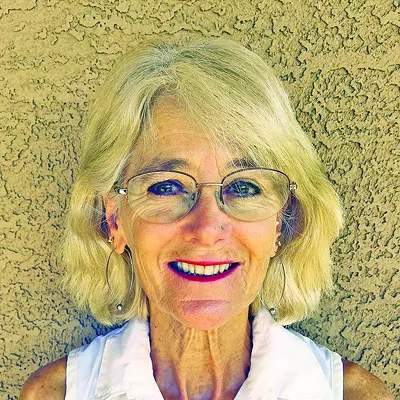Lion attacks have been in the national news lately—following a number of concerning mountain-lion citings in and around Tucson last year—but there's one story I'll never forget.
It was in the Ogden, Utah, Standard-Examiner last year, and featured a hunter who'd shot an "angry" mountain lion while out hunting mule deer. Investigators from the Utah Division of Wildlife Resources determined that the hunter had acted in self-defense when he killed the lion, a nursing mother.
I had trouble understanding why the animal had to die. I didn't fault the hunter, who apparently believed that his life was threatened. But I also thought his quick-to-shoot response was probably unnecessary. My opinion stems from two sightings of mountain lions I've had while hiking, as well as from some of the books I've read, including The Beast in the Garden by David Baron.
Some would call my point of view idealistic and impractical. Besides, they might tell me, you've never been stalked by 150 pounds of hungry cat. And that would have been true—until last fall.
On an early morning in late September, we were at the fifth camp of a nine-day float trip down Utah's Green River through Desolation and Gray canyons. The stars were fading into sunrise as I walked through a stand of willows some 30 feet from where river ranger Jim Wright slept on his raft, and from where my wife, Diane, slept above the beach on a terrace ringed with driftwood. Padding through the cool sand in my bare feet, I wavered, torn between the chance for more sleep and a strong desire for a hot cup of tea.
Then a twig snapped off to my right, and I saw a flash of buckskin. I wondered why a deer would come so close to camp. But it wasn't a deer; the movement through the shadows came from a mountain lion, crawling through the brush to intercept my path. Fear shot through my body like a lightning bolt, electrifying nerve endings from my scalp down to my toes. My brain seemed to buzz.
I turned to run. One step, and I realized the lion had crouched and was preparing to pounce. Pivoting on one foot, I turned again, and took a step back toward the poised lion. It froze in its tracks, just 15 feet away. We stared at each other for a half-second. It wasn't backing away, but remained clearly intent on my next move. I didn't know what to do: Should I back away slowly, or should I behave more aggressively—try to convince the lion that I posed a greater threat?
I screamed. Loud as I could, I screamed, and raised my arms to appear larger and fiercer and unafraid. Then I screamed again and yelled, "Bear spray! Bring the bear spray!" But the lion showed no sign of alarm; it just kept staring deep into my eyes, almost as if in contemplation. There was never a twitch from its whiskers.
My screams woke up Diane and Jim, and when they both screamed as well, the lion's concentration faltered. Within moments, Jim triggered an emergency air horn, and to my relief, I watched the cougar's long tail disappear into the cottonwoods.
Back home, I revisited the article about the hunter who'd shot the "angry" mountain lion and found this advice from the investigating officer, Lt. Scott Davis: "The last thing you want to do is run. Stand tall, make noise, grab sticks, rocks, do anything you can to scare it. If it does get ahold of you, do anything you can to inflict pain—hit, kick, poke eyes, anything. His advice must have been lodged somewhere in my memory; in fact, it probably saved both my life and the lion's.
We seem to worry more about unlikely dangers such as mountain lion attacks than we do about the much more likely threats to life, such as car accidents, which kill some 40,000 people every year.
For my part, I believe that we need to preserve wild places and wild animals. It's up to us to accept some danger while learning how to make coexistence possible.







